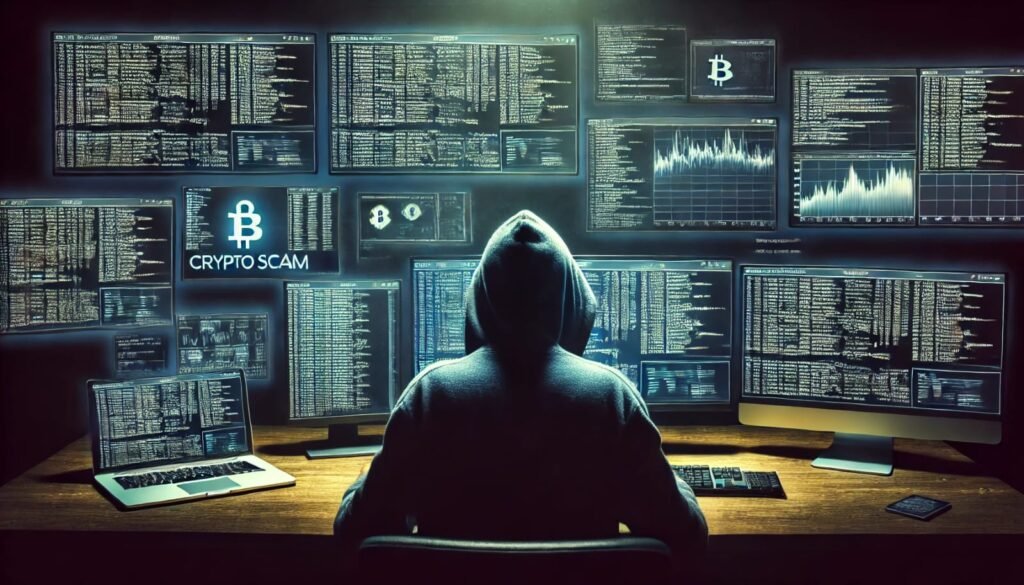The U.S. Department of the Treasury has released a critical 29-page report titled “Illicit Finance Risk Assessment of Non-Fungible Tokens,” addressing the growing concerns surrounding the potential misuse of non-fungible tokens (NFTs).
As NFTs continue to gain popularity and revolutionize digital ownership and art, they have also become a target for illicit activities.
This detailed article delves into the report’s findings, highlighting the risks associated with NFTs, the methods criminals use to exploit these digital assets, and the Treasury’s recommended measures to mitigate these threats.
Understanding NFTs and Their Appeal
Non-fungible tokens (NFTs) are unique digital assets verified using blockchain technology. Unlike cryptocurrencies such as Bitcoin or Ethereum, which are fungible and can be exchanged on a one-to-one basis, each NFT has distinct attributes that make it one-of-a-kind.
This uniqueness has fueled their popularity in various domains, including digital art, collectibles, virtual real estate, and gaming.
NFTs have disrupted traditional markets by enabling artists and creators to monetize their work directly.
However, their rapid rise and the substantial amounts of money flowing through NFT transactions have also attracted criminal elements seeking to exploit the nascent industry.
Key Findings of the Treasury’s Risk Assessment
The Treasury’s report identifies several vulnerabilities and risks associated with NFTs.
While NFTs and their platforms are rarely used for proliferation financing, they are highly susceptible to fraud, scams, and money laundering activities.
Below are the primary concerns highlighted in the report:
1. Fraud and Scams
The decentralized and often anonymous nature of blockchain transactions makes NFTs attractive targets for fraudsters.
Traditional fraudulent schemes involving NFTs can lead to stolen assets, and scammers frequently use phishing attacks, counterfeit NFTs, and pump-and-dump schemes to deceive investors.
2. Money Laundering
Criminals leverage NFTs to launder money, utilizing the complexity and lack of transparency in certain NFT transactions to obscure the origins of illicit funds.
The report details how criminals use various techniques, such as layering transactions across multiple accounts and platforms, to clean dirty money.
3. Cybersecurity Vulnerabilities
The report highlights significant cybersecurity risks associated with NFT platforms.
Poor security practices and vulnerabilities in smart contracts can be exploited by hackers, leading to substantial financial losses for both platforms and users.
4. Intellectual Property and Copyright Issues
NFTs can represent ownership of digital art and other creative works, raising concerns about trademark and copyright protection.
The unauthorized minting and selling of digital content as NFTs without the creators’ consent pose serious legal challenges.
5. Market Volatility
The fluctuating hype and pricing of NFTs can facilitate fraud and theft. Sudden surges in the value of certain NFTs create opportunities for market manipulation, with bad actors taking advantage of unsuspecting investors.
6. Regulatory Gaps
The lack of appropriate regulatory controls in some NFT firms and platforms jeopardizes market integrity and facilitates illicit activities.
The report emphasizes the need for clear regulatory frameworks to address these gaps and enhance oversight.
Treasury’s Recommendations for Mitigating Risks
To combat the identified risks, the Treasury report recommends several measures that, while not exhaustive solutions, can significantly mitigate the threats posed by NFTs:
1. Application of Regulations and Raising Awareness
Authorities should develop specific regulations or guidance for NFTs, clarifying existing obligations for NFT platforms.
This could involve issuing guidance, alerts, and advisories to highlight how current regulations apply to NFTs and increasing outreach to raise awareness of regulatory responsibilities.
2. Enforcing Existing Laws and Regulations
Regulatory agencies must continue to supervise and enforce compliance among actors in the NFT sector, ensuring adherence to obligations under the Bank Secrecy Act (BSA) and sanctions regulations.
Robust enforcement can deter illicit activities and promote a more secure NFT ecosystem.
3. Private Sector Engagement
Ongoing engagement with the private sector is crucial to understanding the evolving NFT ecosystem.
By monitoring changes in NFT use cases and platforms, authorities can better assess their impact on anti-money laundering (AML) and countering the financing of terrorism (CFT) obligations.
NFT firms are encouraged to participate in cybersecurity programs like the CISA Cyber Hygiene Scanning Service and the Financial Services Information Sharing and Analysis Center (FS-ISAC).
4. Addressing Scams and Fraud
The government should collaborate with developers and industry stakeholders to foster innovation that mitigates the illicit finance risks associated with NFTs, particularly scams and fraud.
This can involve developing advanced detection and prevention tools to identify and thwart fraudulent activities.
5. Consumer Education
Educating consumers about the rights and risks associated with NFTs can help reduce confusion and prevent them from falling victim to scams and fraud.
Providing clear and accessible educational materials can empower consumers to make informed decisions.
6. Engagement with International Partners
The U.S. government should work with international partners to encourage global risk assessments and develop policies addressing the illicit finance risks of NFTs and NFT platforms.
International cooperation is essential in tackling cross-border criminal activities and ensuring a cohesive regulatory approach.
Detailed Analysis of Recommended Measures
Application of Regulations and Raising Awareness
The application of existing regulations to NFTs is a complex but necessary step in mitigating risks. Authorities should consider the unique attributes of NFTs and tailor regulations accordingly.
This involves not only adapting current AML/CFT regulations but also addressing intellectual property concerns and consumer protection issues.
Raising awareness within the NFT community about regulatory obligations can help foster a culture of compliance.
Industry participants need to understand their responsibilities and the potential consequences of non-compliance. Public awareness campaigns and educational initiatives can play a significant role in this regard.
Enforcing Existing Laws and Regulations
Effective enforcement of existing laws is paramount to deterring illicit activities. Regulatory bodies must have the resources and expertise to monitor NFT transactions and ensure compliance with AML/CFT and sanctions regulations.
This includes implementing robust reporting and record-keeping requirements for NFT platforms and conducting regular audits.
Private Sector Engagement
Engagement with the private sector is essential for staying abreast of technological advancements and emerging trends in the NFT space.
By fostering open communication and collaboration, regulators can gain valuable insights into the challenges and opportunities within the industry.
This collaborative approach can also facilitate the development of best practices and innovative solutions to combat illicit activities.
Addressing Scams and Fraud
To effectively address scams and fraud, it is crucial to leverage technology and innovation. Advanced analytics, artificial intelligence, and blockchain forensics can enhance the detection and prevention of fraudulent activities.
Industry stakeholders should work together to develop and implement these technologies, ensuring they are accessible to all participants in the NFT ecosystem.
Consumer Education
Empowering consumers with knowledge is a key defense against scams and fraud. Educational initiatives should focus on explaining the basics of NFTs, potential risks, and red flags to watch out for.
This can include creating online resources, conducting workshops, and partnering with educational institutions to integrate NFT literacy into broader financial education programs.
Engagement with International Partners
Given the global nature of the NFT market, international cooperation is critical. The U.S. should lead efforts to harmonize regulatory approaches and share best practices with other countries.
Collaborative initiatives, such as joint investigations and information sharing, can enhance the effectiveness of combating cross-border illicit activities.
The U.S. Department of the Treasury’s “Illicit Finance Risk Assessment of Non-Fungible Tokens” provides a comprehensive overview of the risks associated with NFTs and outlines actionable recommendations to mitigate these threats.
As NFTs continue to evolve and reshape digital ownership, it is imperative to address the vulnerabilities that make them attractive to criminals.
By implementing the Treasury’s recommendations, including developing specific regulations, enforcing existing laws, engaging with the private sector, addressing scams and fraud, educating consumers, and fostering international cooperation, we can create a safer and more secure environment for NFT transactions.
This proactive approach will not only protect consumers and market participants but also preserve the integrity and potential of the NFT ecosystem.
ALSO READ: Key Announcements and Developments in Indian Corporate Sector




